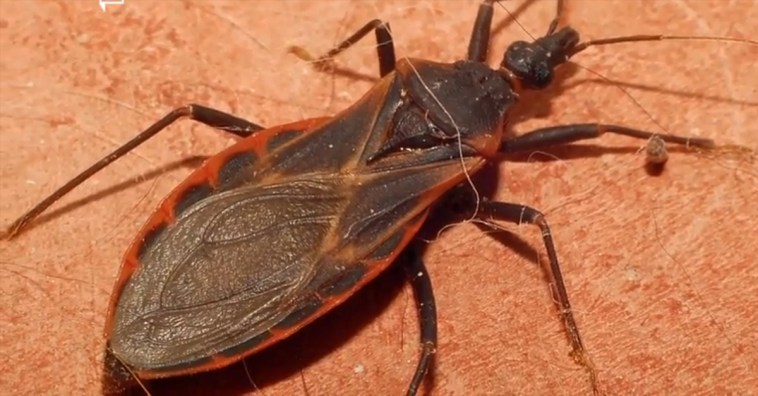This is one “kiss” you definitely don’t want to get.
Videos By Rare
According to recent news reports, triatomine bugs, also known as “kissing bugs,” have infected 12 Texans with a parasite that causes the potentially deadly Chagas disease.
But Texas isn’t the only state where the insects have been found. According to a map by the Centers for Disease Control and Prevention, triatomine bugs have been reported across the southern United States and as far north as Pennsylvania.
Here’s what you need to know:
1. What is Chagas disease?
According to the CDC, the disease, which has infected as many as 8 million people worldwide, is transmitted by insects that carry the Trypanosoma cruzi parasite. Newsy reports that “the disease has an acute phase much like the flu to start. Then it transitions into a chronic phase, during which up to 30 percent of people develop heart problems and 10 percent develop gastrointestinal issues.”
If you suspect you may have contracted the disease, you should see a health care professional right away, the CDC says. The disease can be life-threatening if untreated.
2. What are triatomine bugs?
The mostly nocturnal insects suck the blood of mammals, reptiles and birds, the CDC reports. They are often called “kissing bugs” because they have been known to bite humans’ faces at night.
But that bite can be deadly.
According to the CDC, the bugs, which can carry the T. cruzi parasite, defecate after feeding. An infected bug can pass the parasite, which causes Chagas disease, to a victim if the person “accidentally scratch(es) or rub(s) the feces into the bite wound, eyes or mouth.”
http://twitter.com/MyStatesman/status/669003634462584836
3. Where do “kissing bugs” live?
The bugs have been reported in Mexico, Central America, South America and the southern United States, the CDC reports. They can be found anywhere from under porches and cement to inside animal burrows, chicken coops and outdoor dog houses or kennels. “Kissing bugs” also may live inside near pets and rodent-infested areas or in bedrooms, the CDC adds.
http://twitter.com/Breaking911/status/668983467150061568
4. How can I keep them out of my home?
The CDC recommends the following:
- Seal cracks in your home that lead outside, to attics or to crawl spaces;
- Clean up piles of wood, rocks and brush near the home;
- Screen your windows and doors;
- Place lights, which may attract “kissing bugs,” away from the home;
- Bring pets indoors to sleep;
- Keep your home and pet areas clean.
5. What do I do if I find one of the bugs?
The CDC says you should not “touch or squash the bug.” Instead, place a container on top of the insect, then slide the bug inside and fill the container with rubbing alcohol. If you do not have rubbing alcohol, the CDC says you can freeze the bug in the container, then take it to your local extension service or university laboratory.
For more information, read more from the CDC here or here.

